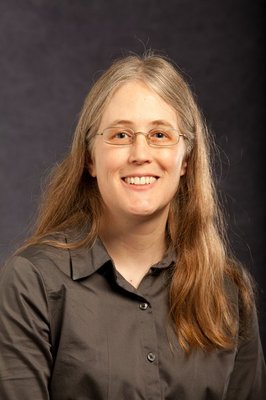安息日会大学物理系教授参与发现引力波
作者:安德烈大学 | 发布时间:2016-02-13

安德烈大学物理系副教授(Tiffany Summerscales)
基督复临安息日会大学物理系教授参与发现引力波:LIGO(“激光干涉引力波天文台”,即发现引力波的物理学家团队)于2016年2月11日宣布“探测到引力波的存在。”该消息成为各大媒体头条,同时也成为基督复临安息日会最高学府,位于美国密西根州的安德烈大学头条。因为引力波的发现也有安德烈大学物理系一份功劳。安德烈大学物理系副教授 Tiffany Summerscales (女)是参与LIGO科研项目的1000名物理学家之一。《纽约时代周刊》宣告说LIGO物理学家们,即 Tiffany Summerscales 教授以及她的同事们“从今以后完全可以被称为天文学家了。” 哈利路亚! 网址: www.andrews.edu/agenda/40590或直接登录安德烈大学网站:www.andrews.edu
Campus News | Posted on February 11, 2016 Tiffany Summerscales, associate professor of physics at Andrews University, was one of the LIGO researchers who discovered a way to detect and measure gravity waves. (Photo by Darren Heslop) By: Becky St. Clair Andrews University, along with the rest of the world, was on pins and needles this morning as we awaited the announcement from the Laser Interferometer Gravitational-Wave Observatory (LIGO) and the National Science Foundation that they had discovered a way to detect and measure gravity waves. However, unlike most of the rest of the world, we waited alongside one of the LIGO scientists who worked to make that a reality. Tiffany Summerscales, associate professor of physics at Andrews University, is one of 1,000 researchers from various locations around the world who has been studying gravity and how to prove a theory Einstein posited a century ago. She’s been working with the project since 2000 when she began her graduate research. Summerscales explains the basis of this research, saying, “Einstein’s theory of general relativity posits that mass curves space-time. When the distribution of mass changes, the curvature must also change and that change spreads outwards through space like the ripples on a pond. These ripples, also called gravitational waves, are very faint. Only the most significant events in the universe, like a supernova (an explosion that briefly outshines an entire galaxy), or massive objects are capable of producing gravitational waves of measureable strength.” The New York Times proclaims that these physicists—Summerscales and her LIGO colleagues—“can now count themselves as astronomers” as they report that they have heard and recorded the sound of two black holes colliding a billion light-years away. “A fleeting chip that fulfilled the last prophecy of Einstein’s general theory of relativity,” says NYT reporter Dennis Overbye. The BBC calls this work “a stunning discovery,” and quotes Sheila Rowan, Glasgow University professor and a lead UK researcher involved with the project: “It’s amazing that when we first turned on our detectors, the Universe was ready and waiting to say ‘hello.’” “The announcement is the climax of a century of speculation, 50 years of trial and error, and 25 years perfecting a set of instruments so sensitive they could identify a distortion in space-time a thousandth the diameter of one atomic nucleus across a 4km strip of laser beam and mirror,” says Tim Radford in his story forThe Guardian. In a statement made by David Reitze, executive director of LIGO, today at a press conference in Washington, D.C., we learn that “the gravitational waves—ripples in space-time—were created by the merging of two black holes. One black hole had the mass of 29 suns; the other was the equivalent of 36 suns. Each was perhaps 50 kilometers (30 miles) in diameter,” CNN reported. CNN reporter Todd Leopold shared in his article that the gravitational waves stretched and compressed space around Earth “like Jell-O” (quoting Reitze). However, these “waves are so small it takes a detector like LIGO, capable of measuring distortions one-thousandth the size of a proton, to observe them.” These waves were observed on September 14, 2015. “Scientists heard the sound of the black holes colliding as a ‘chirp’ lasting one-fifth of a second,” reports CNN. “Though gravitational waves aren't sound waves, the increase in frequency the collision exhibited in its last milliseconds—when the black holes were mere kilometers apart and growing closer—is a frequency we can hear, said Deirdre Shoemaker, a Georgia Tech physicist who works on LIGO.”Andrews Professor Finds Gravity Waves
LIGO research team makes international news

 搜索
搜索

 返回
返回
